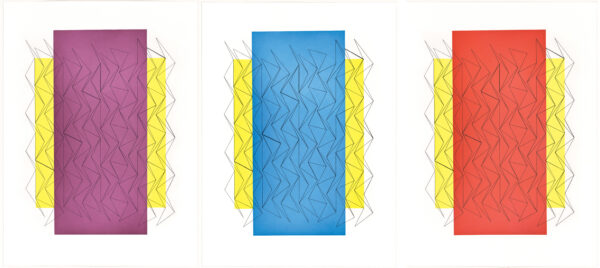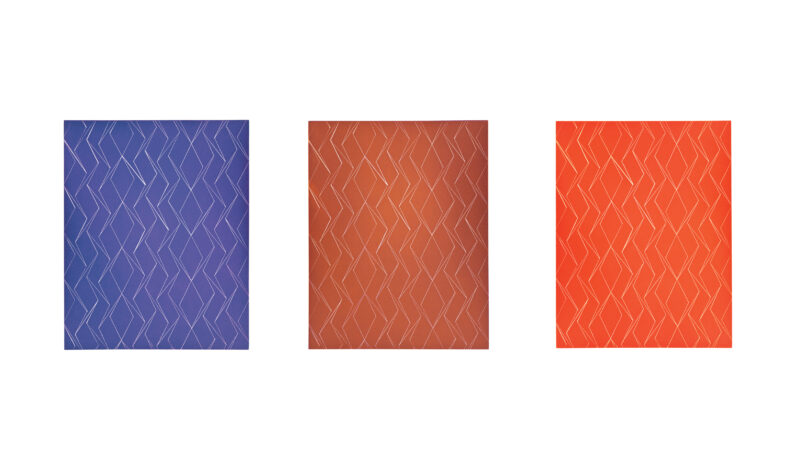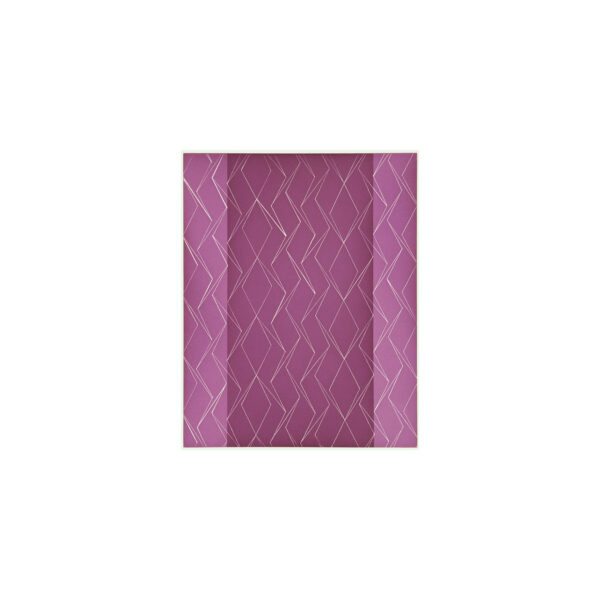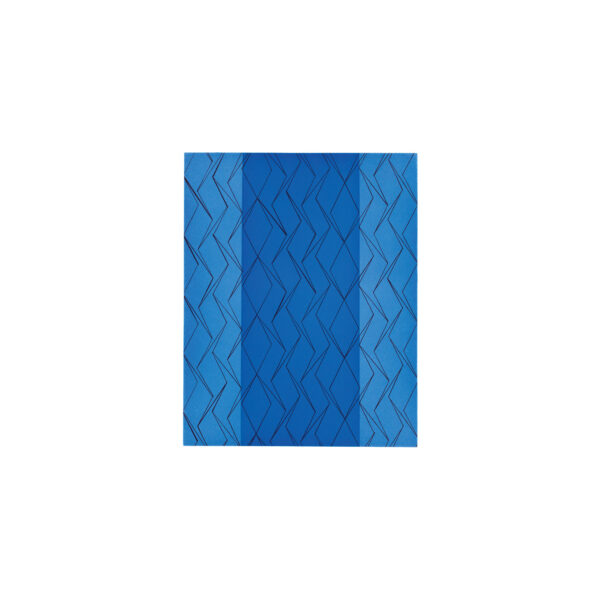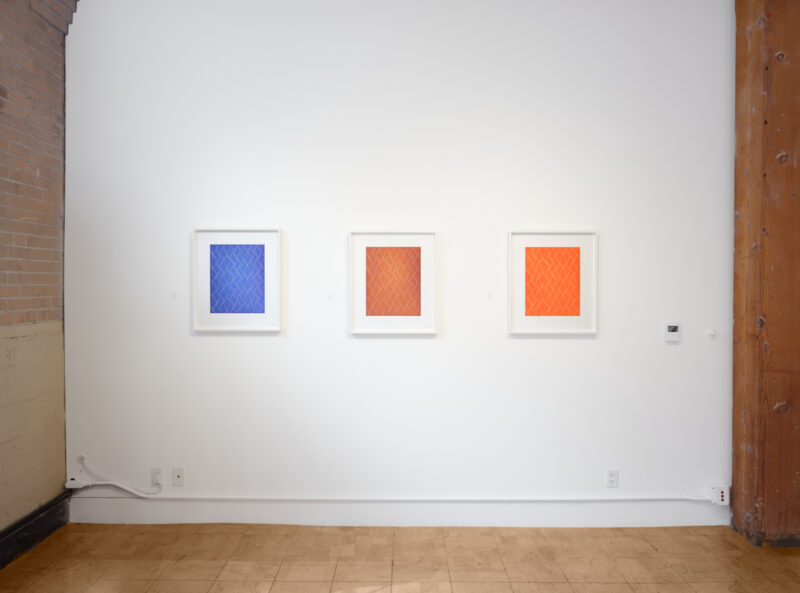Odili Donald Odita is an abstract artist whose colorful geometric paintings and wall installations invigorate physical spaces as well as explore issues of cultural identity. Odita has said of his work that “the colored mosaics I make represent a self made of fragments, which together construct a whole.”
Odita was born in 1966 in Enugu, Nigeria. Shortly after the outbreak of the Biafran War in 1967, he and his family fled the violence targeting the Igbo, their ethnic group, and immigrated to Columbus, Ohio. Odita’s early experience as a Nigerian émigré in suburban America created a duality that informs his art. In an interview for ARTnews, Odita said that he is “fusing these two realities—an African reality with an American reality—together, representing these two different sides within this one space, called the painting.”
In 1990 Odita moved to New York after receiving an M.F.A. from Bennington College. After a few years, he took a break from painting; it had lost its meaning, he said. He created photo-based works and also curated exhibitions, and met other African émigré artists in the New York art scene. One of them, Okwui Enwezor, invited Odita to participate in the 1997 Johannesburg Biennial, and Odita created a series of bus shelter posters based on an image of a Black man bisected by a target. Eventually, Odita returned to painting, and in 1999 he had his first one-person painting show, titled Color Theory, at the Florence Lynch Gallery in New York.
Odita uses the juxtaposition and repetition of color and geometry as elements to unify space in his paintings and wall installations. He mixes his own color palette, and tries not to use the same color more than once. Shapes are demarcated by straight lines, triangles are elongated and skewed, chevrons run tangentially across a color field. Odita has said, “For me, the abstract is not something that I can say is unreal … for me, abstraction is a means of getting to the real in the most direct way.”
In 2007, curator Rob Storr invited Odita to create a wall installation as part of the exhibition, Think with the Senses, Feel with the Mind at the 52nd Venice Biennale. Odita’s Give Me Shelter spanned multiple walls and ran from ceiling to floor. Swaths of vibrant oranges and reds, pale turquoises and pinks, lime greens and yellows intersect, creating a prismatic, enveloping affect. The installation produced a dynamic space. Odita said in an interview, “I use color to create spaces which engage the viewer’s body, works that depend on a symbiosis with the viewer’s perspective”.
Ugochukwu-Smooth C. Nzewi wrote in Bomb that “Odita seeks the potential of color to both seduce and dictate spatial experience. Yet storytelling and meaning-making are at the core of his abstract experiments with color. Approached either as individual strips or as part of a whole, colors become triggers for varied life experiences that are personal to Odita, or that emerge in his consideration of history, the human condition, and our lived reality.” Odita’s paintings are statements on complex topics of identity and power structures within American society. Using specific colors and their combinations to elicit an emotional response, the work creates a shared human experience that goes beyond culture and identity.
Odili Donald Odita is currently represented by Jack Shainman Gallery in New York; David Kordansky Gallery, Los Angeles; and in Cape Town, South Africa by Michael Stevenson Gallery. Since the early 2000s he has lived in Philadelphia and is Professor of Painting and Drawing at Tyler School of Art, Temple University. In 2007 he received the Louis Comfort Tiffany Foundation Grant and in 2022 he was awarded a Pew Fellowship in the Arts. His work has been displayed internationally in both solo and group exhibitions, and in public installations at the Institute of Contemporary Art, Miami; the Philadelphia Museum of Art; the Moody Center for the Arts, Rice University; the Baltimore Museum of Art; the Virginia Museum of Fine Arts; Yerba Buena Center for the Arts, San Francisco; and the Nasher Museum of Art at Duke University. Odita’s work is in the collections of the Baltimore Museum of Art; Birmingham Museum of Art, Alabama ; Hirshhorn Museum and Sculpture Garden, Washington, D.C.; Nasher Museum of Art, Durham, North Carolina; Pérez Art Museum, Miami; Philadelphia Museum of Art; San Francisco Museum of Modern Art; and in the Studio Museum, Harlem, as well as in other national and international institutions.
In 2022, during his first project in the Crown Point studio, Odita worked for two weeks and made fifteen color etchings.
A MONOGRAPH ON THE ARTIST
